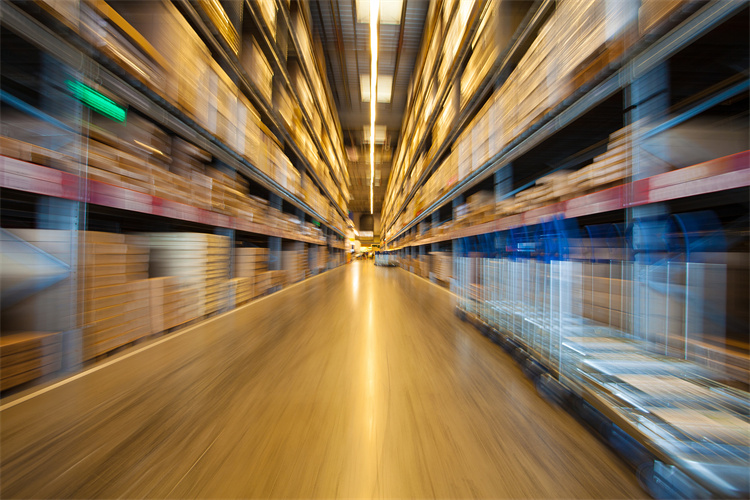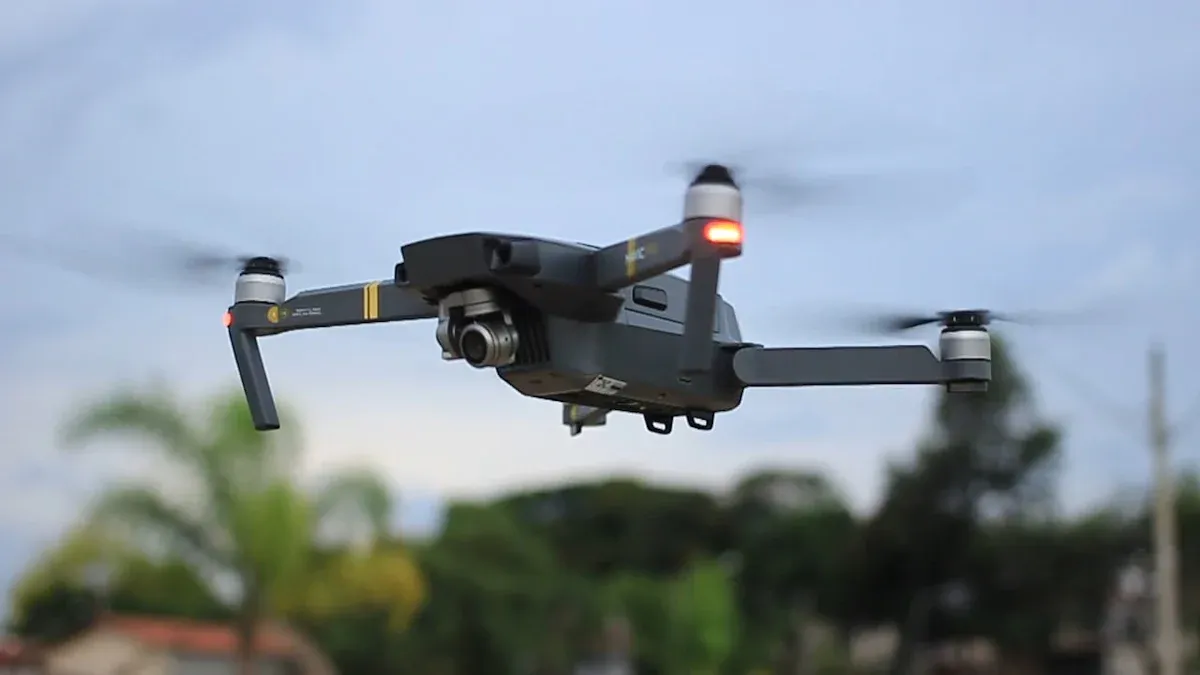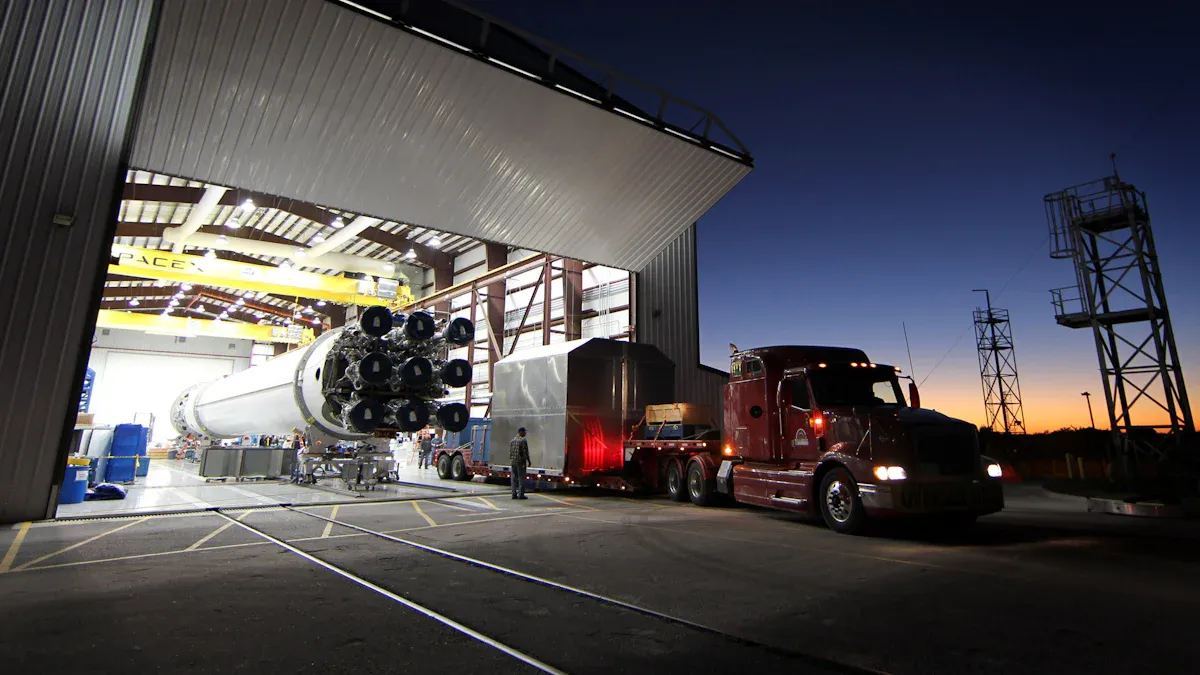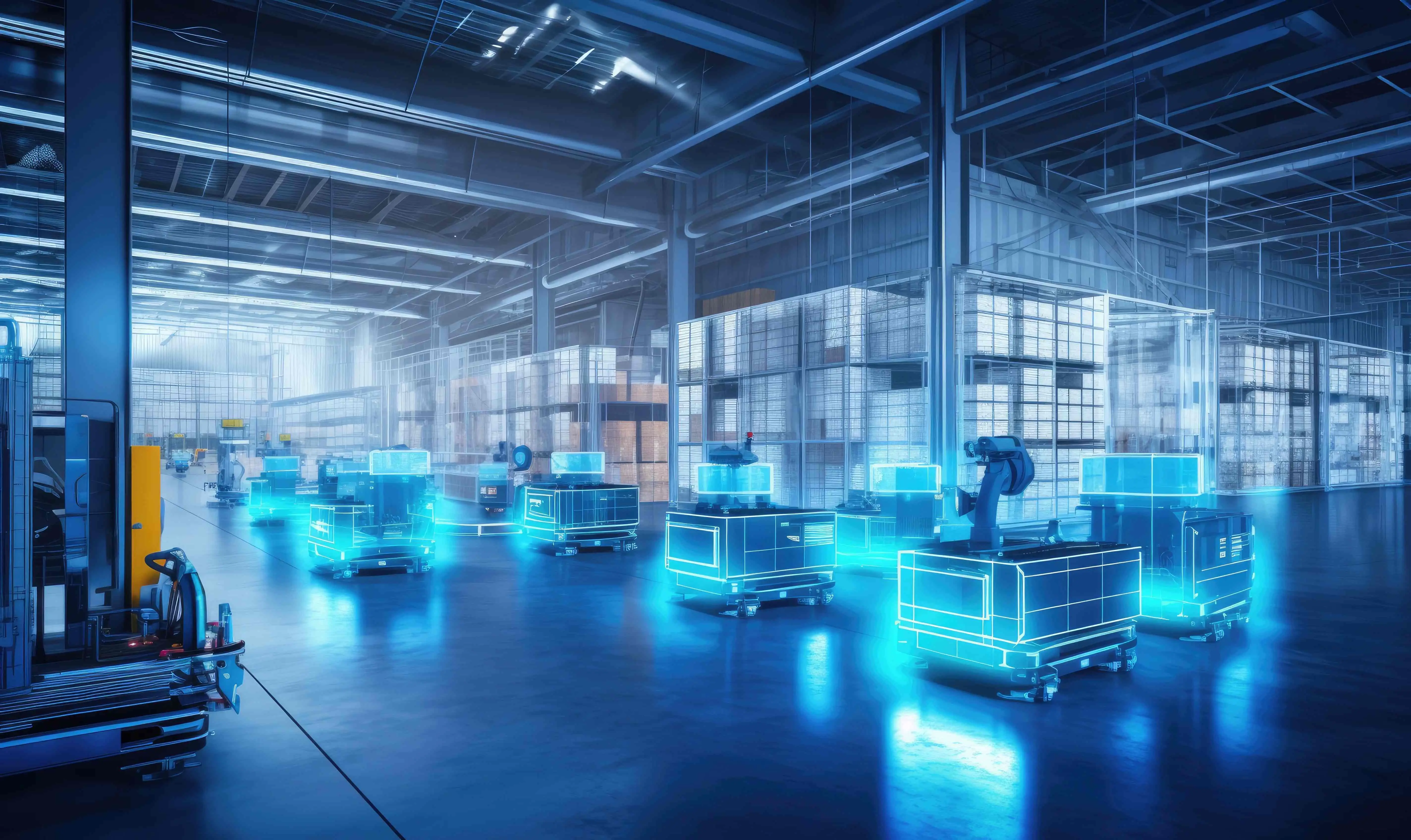What’s Next for Logistics Delivery Speed in 2025

The logistics field will transform logistics delivery speed by 2025. New ideas like live tracking with smart devices and AI-driven routes are enhancing systems. Robots in warehouses assist in completing orders more quickly. Big data aids in planning routes and predicting needs more effectively. These advancements signify faster and more reliable deliveries for you.
Key Takeaways
AI and smart computers improve routes, cutting fuel use by 15%. They also make deliveries faster.
Live tracking with smart devices helps customers see package updates quickly.
Electric and self-driving cars cut pollution. They make delivery greener and cheaper.
Technological Advancements Driving Logistics Delivery Speed

AI and Machine Learning for Route Optimization
AI and machine learning are changing how deliveries are planned. These tools study large amounts of data to find faster routes. They look at traffic, weather, and deadlines to make deliveries quicker. For example, one company used smart methods to cut delivery times by 12%. This made customers happier and saved money for the business.
Machine learning adjusts to changes as they happen. If a road is closed or there’s a delay, it picks a new route right away. This keeps deliveries on time. Using AI can lower fuel costs by up to 15% and speed up deliveries. These tools show how important technology is for improving supply chains.
Benefit | Measurement |
|---|---|
Fuel Cost Reduction | Up to 15% less fuel used |
Delivery Time Improvement | Fewer delays in shipments |
Adaptability to Real-Time | Routes updated instantly |
IoT and Real-Time Tracking in the Supply Chain
The IoT helps track packages in real time. Devices like GPS trackers and sensors show where shipments are at all times. This lets you see updates about your package instantly. Companies can fix problems like delays before they get worse.
The IoT market was worth $46.57 billion in 2023. By 2030, it could grow to $119.68 billion. This shows how much businesses rely on IoT to improve deliveries. These devices find problems and make workflows better. Sharing real-time data between partners also speeds up deliveries. IoT is now a key part of global logistics.
Robotics and Automation in Warehousing and Last-Mile Delivery
Robots and automation are making warehouses and deliveries faster. Robots use sensors and AI to handle goods carefully. They sort packages quickly and reduce mistakes. Cobots work with people to finish tasks faster and better.
Automation helps with last-mile delivery too. Drones and self-driving vehicles deliver packages quickly. These systems save money by using fewer workers and resources. They can also adjust to busy or slow times easily. Robots and automation help companies deliver faster and improve their supply chains.
Tip: Automation saves money and makes deliveries more accurate. It’s a smart choice for businesses in 2025.
Sustainability and Green Logistics Industry Trends

Electric and Autonomous Vehicles for Eco-Friendly Deliveries
Electric and self-driving vehicles are changing how goods are delivered. These vehicles cut carbon emissions by over 90%. This makes them great for eco-friendly logistics. In cities like New York, they lower harmful PM2.5 emissions by 45% each year. Using these vehicles helps the planet and saves money. Better fleet management and less traffic can save $255 million yearly.
Self-driving vehicles bring more advantages. They find better routes and reduce waiting time. This makes deliveries faster. Electric vehicles cost less to fuel and maintain. Together, they improve sustainable logistics. By 2025, these vehicles will shape the future of deliveries.
Carbon-Neutral Practices in Logistics Operations
Carbon-neutral methods are now important in logistics. The industry causes 5.5% of global carbon emissions, about 5,800 megatonnes yearly. Companies are using new ways to lower these emissions. For example, UPS’s ORION system saves 10 million gallons of fuel yearly. This cuts carbon dioxide emissions by 100,000 metric tons. Small changes can make a big difference.
Urban planning also helps. In Pittsburgh, Smart Loading Zones increased loading turnover by 40%. They also cut average stay times by 23%. This reduced CO2e emissions by 12 metric tonnes yearly. Carbon-neutral practices help businesses lower their impact and work more efficiently.
Renewable Energy Integration in Supply Chain Management
Renewable energy is shaping logistics in 2025. Warehouses now use solar panels and wind turbines for power. Automated warehouses save up to 45% more energy than older ones. This lowers costs and boosts efficiency.
AI systems also help with renewable energy use. They predict energy needs and adjust operations to save power. Route optimization tools cut fuel use by 15-30%, improving delivery speed. Using renewable energy helps the planet and keeps businesses competitive.
Note: Using renewable energy and green methods isn’t just about saving money. It builds a logistics system that helps both businesses and the Earth.
Customer-Focused Changes Improving Delivery Speed
Tracking Deliveries in Real Time
Tracking deliveries in real time is a big improvement. You can see where your package is at any moment. This clear information makes waiting less stressful. Updates tell you exactly when your package will arrive. Companies use this to keep you informed without needing to ask questions.
Real-time tracking helps businesses too. Drivers can change routes to avoid traffic or delays. This makes deliveries faster and keeps things running smoothly. Alerts about delivery times help you plan better, making the process easier and more enjoyable.
Custom Delivery Choices for Better Experiences
Personalized delivery is changing logistics. Companies study what customers like, such as delivery times or places. They offer choices like picking a time or sending to another address. These options make sure your needs are met and improve your experience.
Flexible pricing is also important. Businesses change delivery costs based on order size or loyalty. This gives you cheaper options and helps companies earn more. Personalization makes customers happier and businesses more successful.
Faster Delivery Services Like Same-Day Options
Getting packages the same day is now common. During COVID-19, demand for fast delivery grew by 41%. By 2028, this market could reach $24.9 billion. This shows people want speed and ease.
New ideas like drones and self-driving cars make fast delivery possible. These tools lower transport costs, which are a big part of logistics expenses. By 2025, same-day and super-fast delivery will change how quickly you get your orders.
Making Supply Chains Stronger and Easier to Track
Predicting Demand with Smart Tools
Smart tools are changing how we guess customer needs. Using methods like machine learning, businesses can predict what people will buy. This helps avoid having too much or too little stock. Stores using these tools match their products to what customers want. This lowers the chance of running out of items and speeds up deliveries. Better planning also saves resources, which is key for staying ahead in 2025.
These tools don’t just help with guessing demand. They also make supply chains work better. Knowing what’s needed early stops problems and delays. With these tools, businesses can stay ready and give customers what they need on time.
Spreading Out Supply Networks
Spreading out supply networks helps avoid big problems. By having many locations, businesses can handle surprises faster. Tracking goods in real time and sharing information makes this even better. For example, some companies cut costs and time by using spread-out systems. This makes supply chains stronger and smoother.
Having many locations also lowers risks like scams. One bank lost $600 million because of fake deals. By spreading out, businesses can avoid such problems and build safer supply chains.
Working Together with Tools Like JusLink
Working together is key for better supply chains. Tools like JusLink let partners share data in real time. This improves teamwork and cuts down on delays. Studies show these tools make supply chains less likely to fail during problems.
JusLink helps track shipments, manage stock, and plan schedules easily. By working together, businesses can handle challenges and keep deliveries steady in 2025.
Regulatory and Global Trade Impacts on Logistics Delivery Speed
Following Environmental Rules
Environmental rules are changing supply chains in 2025. Governments are making stricter laws to cut pollution and support green ideas. These rules push companies to use clean energy and eco-friendly methods. For example, renewable energy helps the environment at all levels. Green ideas lower CO2 in higher levels but need better planning to avoid waste.
Aspect | Findings |
|---|---|
Logistics Performance Impact | |
Green Innovation | Small CO2 impact at 10th level; big drop at 20th–90th. |
Renewable Energy Contribution | Helps the environment at all levels (10th–90th). |
Economic Globalization Impact | Improves environmental quality at all levels (10th–90th). |
By following these rules, companies help the planet and build trust for the future.
Growing Cross-Border Online Shopping and Trade Deals
Online shopping between countries is growing fast. By 2025, this market could reach $103.52 billion, growing 19.7% yearly. This shows people want faster and better deliveries. Trade deals also help by making customs easier and cutting taxes. This makes trading between countries smoother.
Year | Market Size (in billion USD) | CAGR (%) |
|---|---|---|
2024 | 86.45 | 19.7 |
2025 | 103.52 | |
2029 | 210.11 | 19.4 |
These changes show how supply chains must adapt. Companies that adjust can deliver faster and make customers happier.
Making Logistics Practices the Same Everywhere
Using the same logistics methods worldwide helps reduce delays. Companies use smart tools like logistic regression to improve work. For example, a freight company cut delivery failures by 15% with better tracking. An online store saved 10% on costs by improving routes.
Case Study | Description | Result |
|---|---|---|
Global Freight Forwarder | Used logistic regression to track shipments | 15% fewer delivery failures |
Retail Giant’s Inventory Management | Predicted demand spikes | 20% fewer lost sales from stockouts |
E-commerce Logistics Optimization | Improved routes and resources | 10% lower operational costs |
Making logistics the same everywhere makes supply chains stronger. This helps businesses deliver faster and give better service in 2025.
The Role of JUSDA and the China-Europe Express Rail in 2025
Balancing Speed and Cost with Rail Transport
The China-Europe Express Rail is fast and affordable. It delivers goods in 15-20 days. This is quicker than sea freight and cheaper than air freight. Businesses can use it to improve their supply chains. It’s great for moving items like electronics, clothes, and medical supplies.
Did you know? Rail transport costs only one-fifth of air freight. It saves money while keeping delivery times reliable.
By 2025, this rail service will keep improving logistics. It will help businesses meet the need for faster and cheaper deliveries.
Improving Cross-Border Logistics
The China-Europe Express Rail makes cross-border shipping easier. It reduces customs delays and improves teamwork between countries. Inland cities and big cities see logistics efficiency rise by 4.55%.
This service works best for value chain products, helping industries with complex needs. It handles many types of goods and ensures on-time delivery. The rail service strengthens global trade and connections.
Helping Different Industries with Custom Solutions
JUSDA’s rail service helps industries like electronics, FMCG, and medical supplies. It offers special solutions for each industry. For example, car companies get reliable delivery schedules. Medical companies can safely ship sensitive goods.
The rail service also works well with other transport methods, like sea-rail options. This flexibility helps businesses grow and adjust to trends in 2025. JUSDA’s custom approach keeps supply chains strong and competitive.

JUSDA Solutions
To provide you with professional solutions and quotations.
The logistics world will change delivery speed by 2025. Technology like drones and self-driving vehicles will make deliveries faster. These tools cut pollution and work more efficiently. Blockchain improves tracking, fixing problems in supply chains. Businesses using these ideas will stay ahead. JUSDA’s services, such as the China-Europe Express Rail, mix speed with low cost, creating new global delivery standards.
See Also
Five Leading Logistics Programs To Explore This Year
How AI Is Transforming The Future Of Supply Chains
Discover The Latest Innovations In Sea Freight Logistics
Navigating The Future Of Logistics Through Digital Solutions
